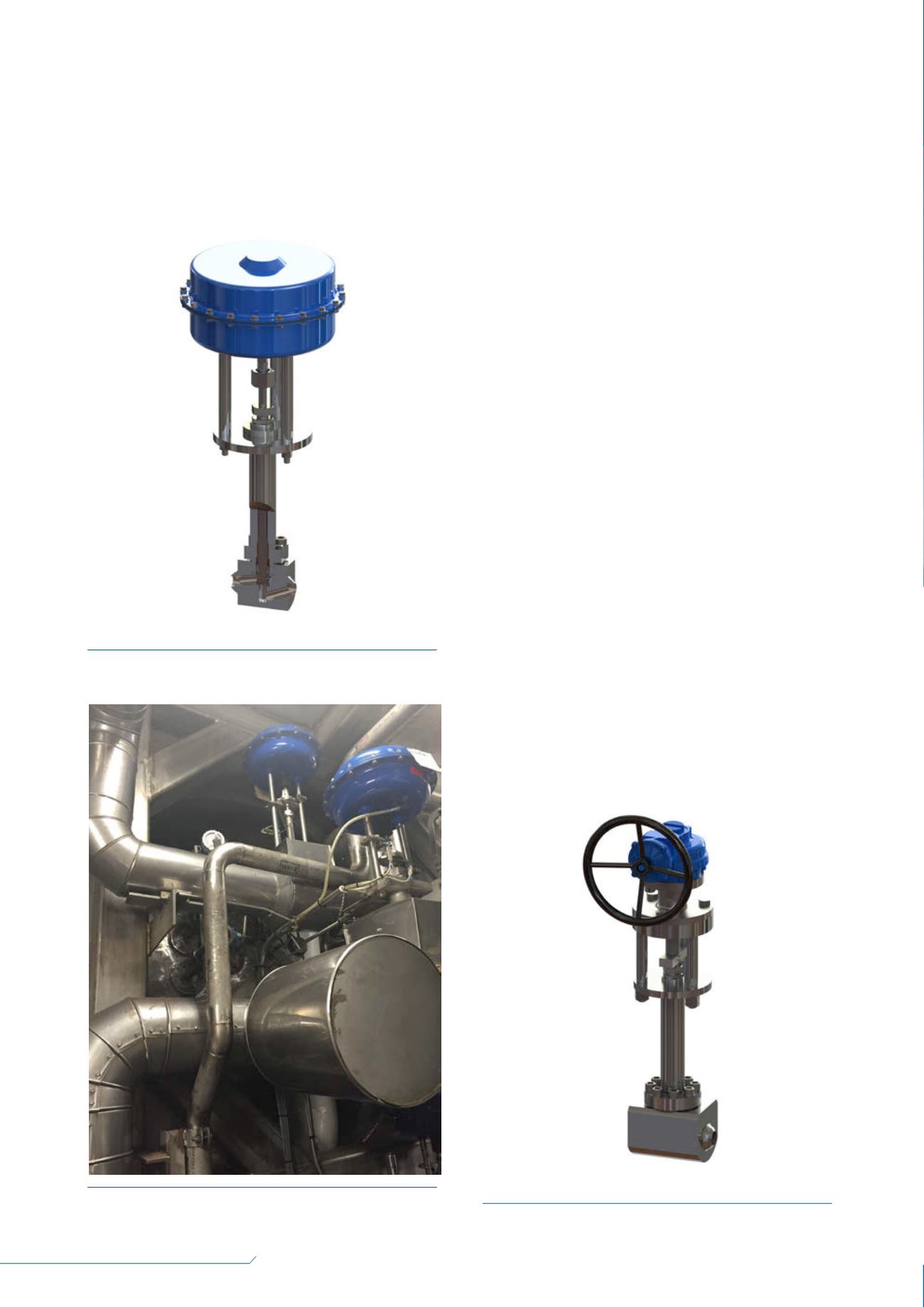
62
LNG
INDUSTRY
SEPTEMBER
2016
The ME-GI engines that were launched over two years
ago require the gas to be injected at approximately 320 bar
pressure into the engine cylinders to ensure that effective
combustion takes place. MAN Diesel & Turbo has developed
the same engines to burn ethane, and these require the gas to
be injected at over 400 bar pressure. This has led to the need
for cryogenic valves that can withstand these higher
pressures.
The latest ME-GI engines enable efficient ship propulsion
and offer lower emission values that can assist with meeting
current environmental limits in ECAs. They also contribute to
an overall improvement in energy efficiency. A high pressure
gas injection dual-fuel two-stroke engine with higher system
efficiency offers a significant reduction in emissions for LNG
carriers, as well as other ocean-going vessels.
Market opportunity
This has created a market opportunity for specialist marine
cryogenic valve manufacturers to respond with high pressure
valves. Parker Bestobell Marine has developed a new range
of Class 2500 and Class 4500 valves that can operate to over
500 bar pressure. These valves are required to be prototype
tested and to be fully approved by the relevant marine
classification societies.
The company’s new range of high pressure valves can be
used in FGSs where ethane is used as the fuel. Liquid ethane
has not traditionally been carried on ships, but with the
development of shale gas fields in the US, there are large
quantities of methane (natural gas), as well as wet gases,
such as ethane, propane and butane, which can also be used
as a fuel when carried as a cargo.
There are many considerations for cryogenic valve
manufacturers when specifying high pressure valves. Valves
must have a valid prototype test certificate issued by one of
the major classification societies (this means being tested to
1.5 x design pressure). They must also have a type approval
from each of the major classification societies. In addition to
this, they must be fire safe, so that all components can
withstand a temperature of 925°C or above, without leaking.
All valves must be of stainless steel design, with butt weld
end connections for the liquid phase. The seat and body of
the valve may require 100% ambient testing and 10%
cryogenic testing of each size and type of valve. In addition,
Figure 1.
Cross section of a pneumatic actuated high pressure
globe valve.
Figure 2.
Pneumatic actuated low pressure globe valves
installed within a fuel system.
Figure 3.
A manual high pressure globe valve with handwheel.


